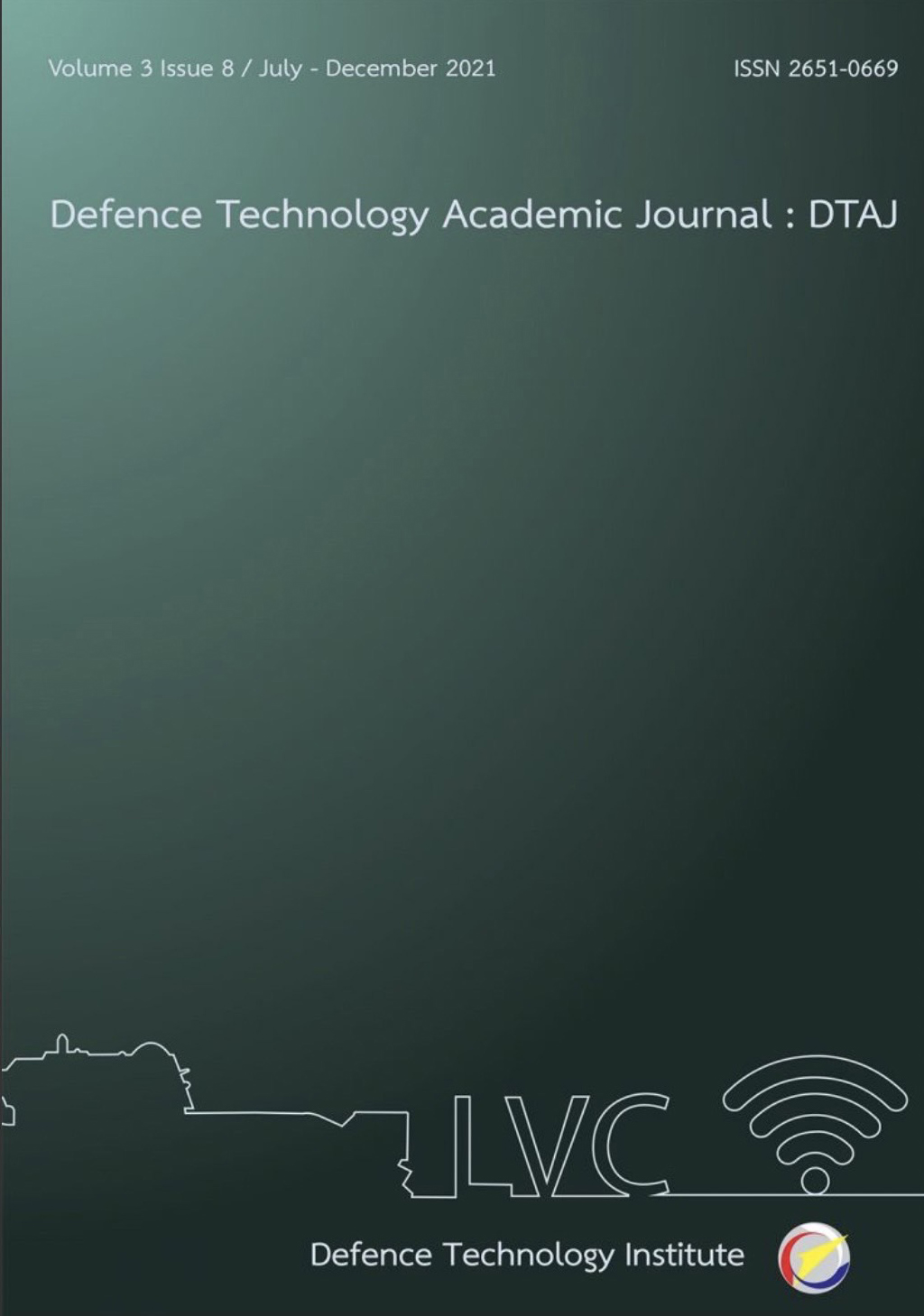Flood Risk Assessment using Analytical Hierarchy Process: A Case Study in Pua Subdistrict, Pua District, Nan Province
Main Article Content
Abstract
Flood disasters are a global problem and have caused tremendous damages. The main objective of this research is to assess flood risk areas, a case study of Pua subdistrict, Pua district, Nan province. For an operation method, we used an expert interview form as a scorer for the weight of 6 related factors consist of rainfall, slope, elevation, stream distance, land use and soil series and analyzed by analytical hierarchy process (AHP) model by dividing the risk areas into 5 levels comprise of very high, high, moderate, low and very low. Results were achieved by AHP calculation for most contributing factors to flooding. The most contributing factor is rainfall at 0.328, the second being slope at 0.285, the third being elevation at 0.144, the foruth being stream distance at 0.114, the fifth being land use at 0.082 and the least contributing factor being soil series at 0.046. The consistency ratio (CR), consistency Index (CI), and Random Index (RI) were accepted with values of 0.0035, 0.043 and 6.0216, respectively. The high risk level of damaged area was 10,380 Rai, or 71% of the study area. The moderate risk level of damaged area was 2,681 Rai, or 18% of the study area, the very high level was covered 1,380 Rai, or 9% of the study area, and the low and very low was 191 Rai or 1.30%. Security personnel can use the information and results of this study to prepare for future defence.
Downloads
Article Details

This work is licensed under a Creative Commons Attribution-NonCommercial-NoDerivatives 4.0 International License.
Journal of TCI is licensed under a Creative Commons Attribution-NonCommercial-NoDerivatives 4.0 International (CC BY-NC-ND 4.0) licence, unless otherwise stated. Please read our Policies page for more information...
References
Rotjanakusol, T. & Laosuwan, T. 2018. Inundation area investigation approach using remote sensing technology on 2017 flooding in Sakon Nakhon province Thailand”. Studia Universitatis Vasile Goldis Arad, Seria Stiintele Vietii, 28(4), 159-166.
Milly, P.C., Wetherald, R.T., Dunne, K.A., & Delworth, T.L. 2002. Increasing Risk of Great Floods in a Changing Climate. Nature. 15(6871), 514-517.
Department of Disaster Prevention and Mitigation. Ministry of Interior. Thailand. 2013. Report Analysis/Monitoring. Retrieved from www.disaster.go.th/th/dwn-download-12-1/ (in Thai)
Asian Disaster Reduction Center. 2012. Natural Disaster Data Book. Asian Disaster Reduction Center (ADRC).
Blanc, J., Hall, J., Roche, N., Dawson, R., Cesses, Y., Burton, A., & Kilsby, C. 2012. Enhanced efficiency of pluvial flood risk estimation in urban areas using spatial–temporal rainfall simulations. Journal of Flood Risk Management, 5, 143–152.
Kim, B., Sanders, B.F., Schubert, J.E., & Famiglietti, J.S. 2014. Mesh type tradeoffs in 2D hydrodynamic modeling of flooding with a Godunov-based flow solver. Advances in Water Resources, 68, 42-61.
Elkhrachy, I. 2015. Flash Flood Hazard Mapping Using Satellite Images and GIS Tools: A case study of Najran City, Kingdom of Saudi
Arabia (KSA). The Egyptian Journal of Remote Sensing and Space Science, 18(2), 261-278.
นาถนเรศ อาคาสุวรรณ, ประมาณ เทพสงเคราะห์, และ วรุฒน์ นาที. 2552. การศึกษาปัจจัยการเกิดน้ำท่วมเพื่อกำหนดพื้นที่เสี่ยงภัยน้ำท่วมด้วยระบบสารสนเทศภูมิศาสตร์และแนวทางป้องกันบรรเทาในบริเวณลุ่มน้ำย่อยทะเลสาบสงขลาฝั่งตะวันตก จังหวัดพัทลุง. มหาบัณฑิต ศศ.ม. (พื้นที่ศึกษา).บัณฑิตวิทยาลัย/มหาวิทยาลัยทักษิณ. เอกสารอิเล็กทรอนิกส์.
มยุรมาศ ปุ่นสกุล. 2545. การวิเคราะห์สภาพพื้นที่เสี่ยงอุทกภัยและสภาวะการรับรู้ของประชาชน กรณีศึกษา ตำบลวังบาล อำเภอหล่มเก่า จังหวัดเพชรบูรณ์. ปริญญานิพนธ์ วท.บ. (ภูมิศาสตร์). บัณฑิตวิทยาลัย มหาวิทยาลัยเชียงใหม่. เอกสารอิเล็กทรอนิกส์.
เพ็ชรสวัสดิ์ กันคำ. 2547. การประยุกต์ใช้สารสนเทศภูมิศาสตร์เพ่อื วิเคราะห์พ้นื ที่เส่ยี งต่อการเกิดอุทกภัยในเขตลุ่มน้ำแม่กวง. ปริญญานิพนธ์ วท.บ. (ภูมิศาสตร์). บัณฑิตวิทยาลัย มหาวิทยาลัยเชียงใหม่. เอกสารอิเล็กทรนิกส์.
Samarasinghe, S.M.J.S. 2010. Application of remote sensing and GIS for flood risk analysis: A case study at KALU-GANGA river, Sri Lanka. Survey Department. Kyoto Japan. Electronic records.
Official Statistics Registration System, Thailand. 2553. Retrieved from http://service. nso.go.th/nso/nsopublish/districtList/page1.htm (in Thai)
Fundamental Geographic Data Set (FGDS). 2556. Retrieved from www.ngis.go.th/home/wp-content/uploads/2019/03/FundamentalGeographicDataSet_FGDS.pdf (in Thai)
Saaty, T.L. 1980. The analytical hierarchy process”, New York: McGraw-Hill.


